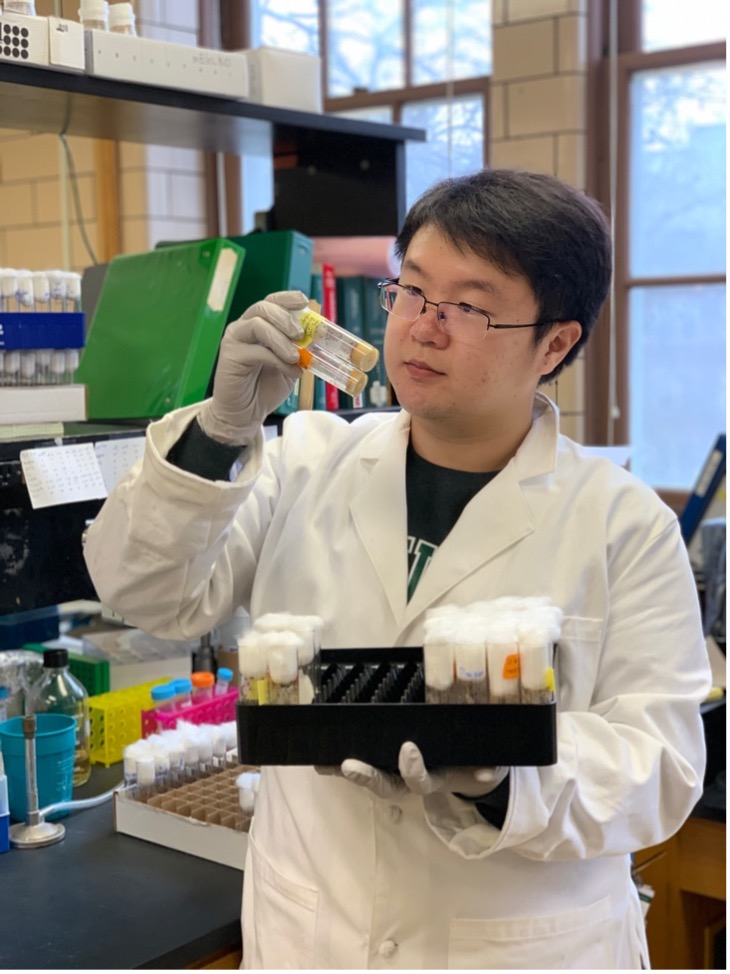MSU entomologists uncovered how little fruit flies survive deserts
New research on a desert fruit fly species shows that evolutionary changes in a single gene lead to the ability to survive extremely high temperatures and low humidity in deserts.

As our environments are becoming warmer and drier due to rapid climate change, organisms must adapt to these changes so that they can survive and thrive in these new conditions. One way to predict how species might adapt is to understand how current species have already evolved and adapted to extremely hot and dry environments such as deserts.
New research on a desert fruit fly species from Michigan State University (MSU) shows that evolutionary changes in a single gene lead to the ability to survive extremely high temperatures and low humidity in deserts.

“Maintaining water balance is essential for all organisms living in terrestrial environments,” said Zinan Wang, a postdoctoral researcher in the Insect Physiology Laboratory led by Associate Professor Henry Chung from the Department of Entomology at MSU. “In some extreme environments such as deserts, high temperatures exacerbate rapid water loss. However, the species that dwell in the deserts have already evolved physiological mechanisms to reduce water loss and survive these extreme conditions. We can leverage these species to understand how other species could evolve in the face of similar environmental changes.”
Wang and the other members of the Chung Lab have published a new article in the journal Science Advancesthat elucidates how the desert fruit fly Drosophila mojavensis had evolved a higher capability to survive water loss in dry and hot conditions, a key trait for this species adapting to deserts.
Insects use a lipid layer on their body surface to reduce water loss. In this study, Wang and colleagues identified a specific gene in Drosophila that determines the composition of this lipid layer for them to reduce water evaporation more efficiently at higher temperatures. They named this gene mElo. They further demonstrate that evolutionary changes in the protein-coding regions of mElo lead to phenotypic changes that allow the species to survive deserts.
They also showed that mElo is specific to fruit fly lineages and cannot be found in other desert arthropods, suggesting that there could be independent evolution of other genes that are involved in the adaptation of other desert species.
Integrating molecular biology to understand the phenotypic evolution
This new paper builds on another recent article in the journal eLife published in December 2022, also led by Wang. That work examined the correlation between two traits, the chemical composition of the lipid layer on the body surface and the desiccation resistance, for 50 different fruit fly and sibling species that originated from diverse terrestrial habitats (including deserts). Using machine learning techniques and synthetic chemicals, Wang and colleagues showed that a specific group of lipids (named mbCHCs) determines the variation in their ability in withstanding desiccation stress.

Given the importance of mbCHCs in the survival of desert fruit flies and other desert arthropods in extremely dry habitats, it is not clear what gene produces mbCHCs in desert fruit flies and whether the other desert arthropods also use the same gene for their adaptation to deserts. Findings in the Science Advances article answered the questions.
In both publications, Wang and colleagues studied the evolution of this lipid layer on the body surface of fruit flies. However, a lipid layer like this is not only present in fruit fly species but also in almost all other insect species with important roles in their adaptation to diverse environments.
More importantly, the findings from this research can apply to the conservation of many other insect species such as pollinators and biological control agents, and understand whether and how these species could evolve and survive climate change.
This research is funded by the National Science Foundation ( Grant number: 2054773). Other contributors to this research include other Chung Lab members Jian Pu, Haosu Cong, undergraduate researchers Cole Richards (MMG ‘21) and Elaina Giannetti (MMG ‘21), in collaboration with Associate Professor Zhenguo Lin at St. Louis University.
Citations
Wang, Z., Receveur, J. P., Pu, J., Cong, H., Richards, C., Liang, M., & Chung, H. (2022). Desiccation resistance differences in Drosophila species can be largely explained by variations in cuticular hydrocarbons. eLife, 11, e80859.
Wang, Z., Pu, J., Richards, C., Giannetti, E., Cong, H., Lin, Z., & Chung, H. (2023). Evolution of a fatty acyl-CoA elongase underlies desert adaptation in Drosophila. Science Advances (in press) -> waiting for citation



 Print
Print Email
Email


